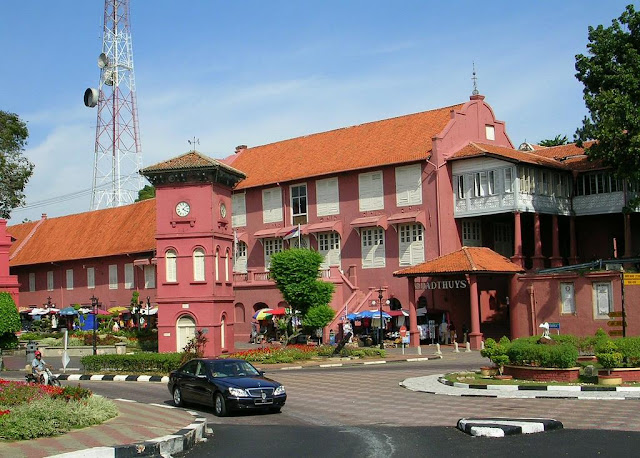Dutch Square
Dutch Square Malacca is the most picturesque along Jalan Kota. It's also a colorful trishaw pickup point, it is distinguished by a group of bright, terracotta-red colonial Dutch buildings, built between 1660 and 1700, with louvered windows and chunky doors with wrought iron hinges.Jonker Street
Maritime Museum
With monthly visitors around 20,000 people, Maritime Museum is the most visited museum in Malacca. The museum main exhibits the replica of Flor de la Mar. The museum also houses exhibits, artifacts and documents from the golden era of Malacca and shows how political control of Malacca was essential to the establishment of maritime dominance in the region. It also displays the trading link of Malacca from the early time through the colonial era until independence.St. Paul's Church
Originally built by a Portuguese captain in 1521 as a simple chapel, St. Paul’s Church offers views over Malacca from the summit of Bukit St Paul. St. Francis Xavier, one of the founders of the Jesuit order, used the church as his base for his missionary journeys to China and Japan. In one of those journeys, Xavier fell sick and eventually died in China in 1552. His body was temporarily interred here for nine months before being transferred to Goa, where it remains today. Visitors can look into his ancient tomb inside the church, and a marble statue of the saint gazing over the city.Stadthuys
The Stadthuys (an old Dutch spelling, meaning city hall) is a historical structure situated in the heart of Malacca City, the administrative capital of the state of Malacca, Malaysia in a place known as the Red Square. The Stadhuys is known for its red exterior and nearby red clocktower. It was built by the Dutch in 1650 as the office of the Dutch Governor and Deputy Governor.See more: Visit the best 7 old towns in Asia
Sultanate Palace
Malacca Sultanate Palace is a wooden replica of Sultan Mansur Shah’s 15th-century palace. Set at the base of St. Paul’s Hill it was painstakingly constructed in 1985 using traditional construction techniques and materials, based on accounts in the 16th century, Sejarah Melayu (Malay Annals) text. According to the annals, Sultan Mansur Shah’s seven-tiered palace was built entirely without nails and supported with carved, wooden pillars and featured a copper and zinc roof. The most elaborate royal palace ever constructed in the world in 1459. According to the annals it was destroyed the year after the sultan ascended the throne when it was struck by lightning.Source Internet




















